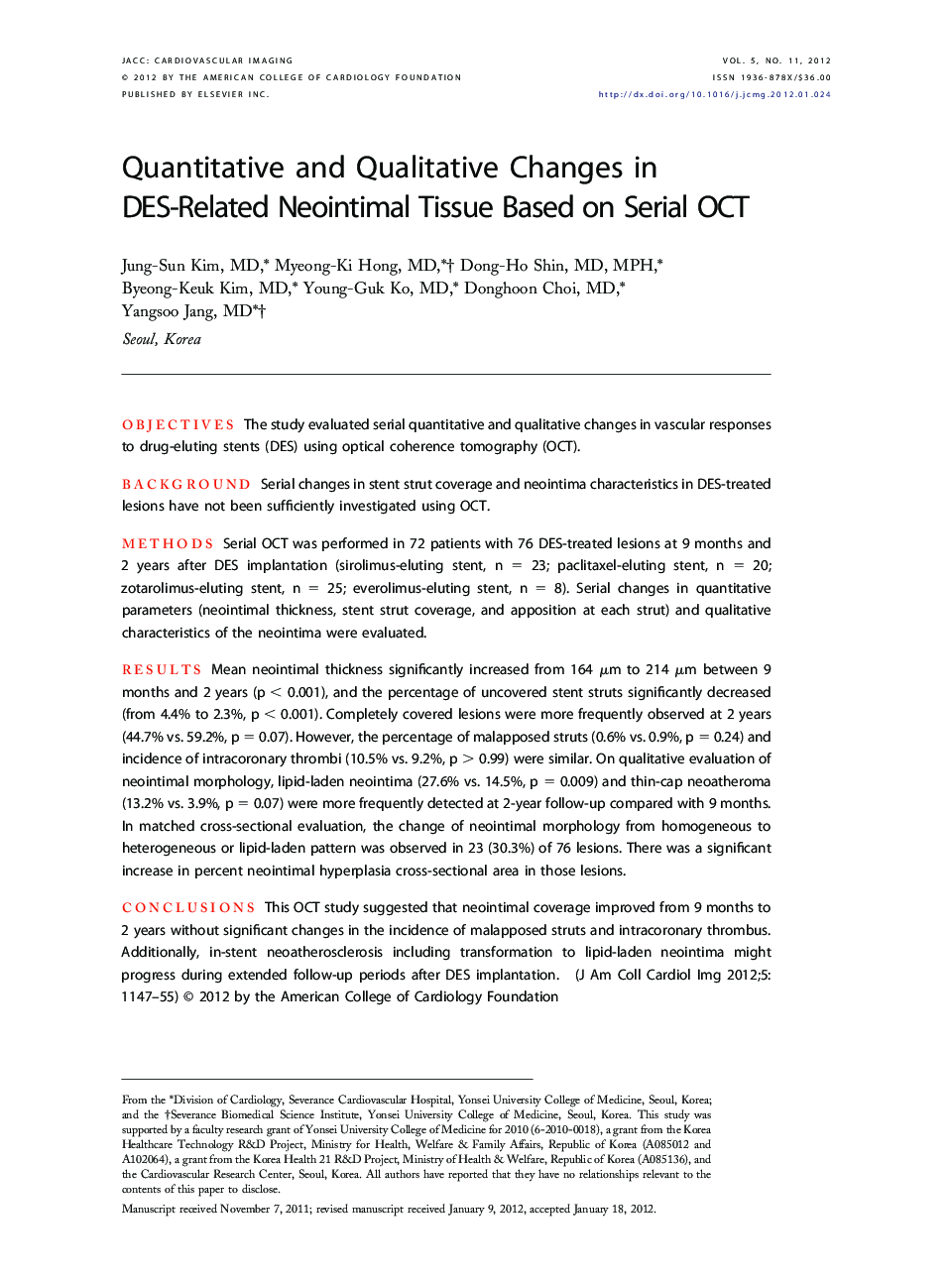| Article ID | Journal | Published Year | Pages | File Type |
|---|---|---|---|---|
| 2938321 | JACC: Cardiovascular Imaging | 2012 | 9 Pages |
ObjectivesThe study evaluated serial quantitative and qualitative changes in vascular responses to drug-eluting stents (DES) using optical coherence tomography (OCT).BackgroundSerial changes in stent strut coverage and neointima characteristics in DES-treated lesions have not been sufficiently investigated using OCT.MethodsSerial OCT was performed in 72 patients with 76 DES-treated lesions at 9 months and 2 years after DES implantation (sirolimus-eluting stent, n = 23; paclitaxel-eluting stent, n = 20; zotarolimus-eluting stent, n = 25; everolimus-eluting stent, n = 8). Serial changes in quantitative parameters (neointimal thickness, stent strut coverage, and apposition at each strut) and qualitative characteristics of the neointima were evaluated.ResultsMean neointimal thickness significantly increased from 164 μm to 214 μm between 9 months and 2 years (p < 0.001), and the percentage of uncovered stent struts significantly decreased (from 4.4% to 2.3%, p < 0.001). Completely covered lesions were more frequently observed at 2 years (44.7% vs. 59.2%, p = 0.07). However, the percentage of malapposed struts (0.6% vs. 0.9%, p = 0.24) and incidence of intracoronary thrombi (10.5% vs. 9.2%, p > 0.99) were similar. On qualitative evaluation of neointimal morphology, lipid-laden neointima (27.6% vs. 14.5%, p = 0.009) and thin-cap neoatheroma (13.2% vs. 3.9%, p = 0.07) were more frequently detected at 2-year follow-up compared with 9 months. In matched cross-sectional evaluation, the change of neointimal morphology from homogeneous to heterogeneous or lipid-laden pattern was observed in 23 (30.3%) of 76 lesions. There was a significant increase in percent neointimal hyperplasia cross-sectional area in those lesions.ConclusionsThis OCT study suggested that neointimal coverage improved from 9 months to 2 years without significant changes in the incidence of malapposed struts and intracoronary thrombus. Additionally, in-stent neoatherosclerosis including transformation to lipid-laden neointima might progress during extended follow-up periods after DES implantation.
